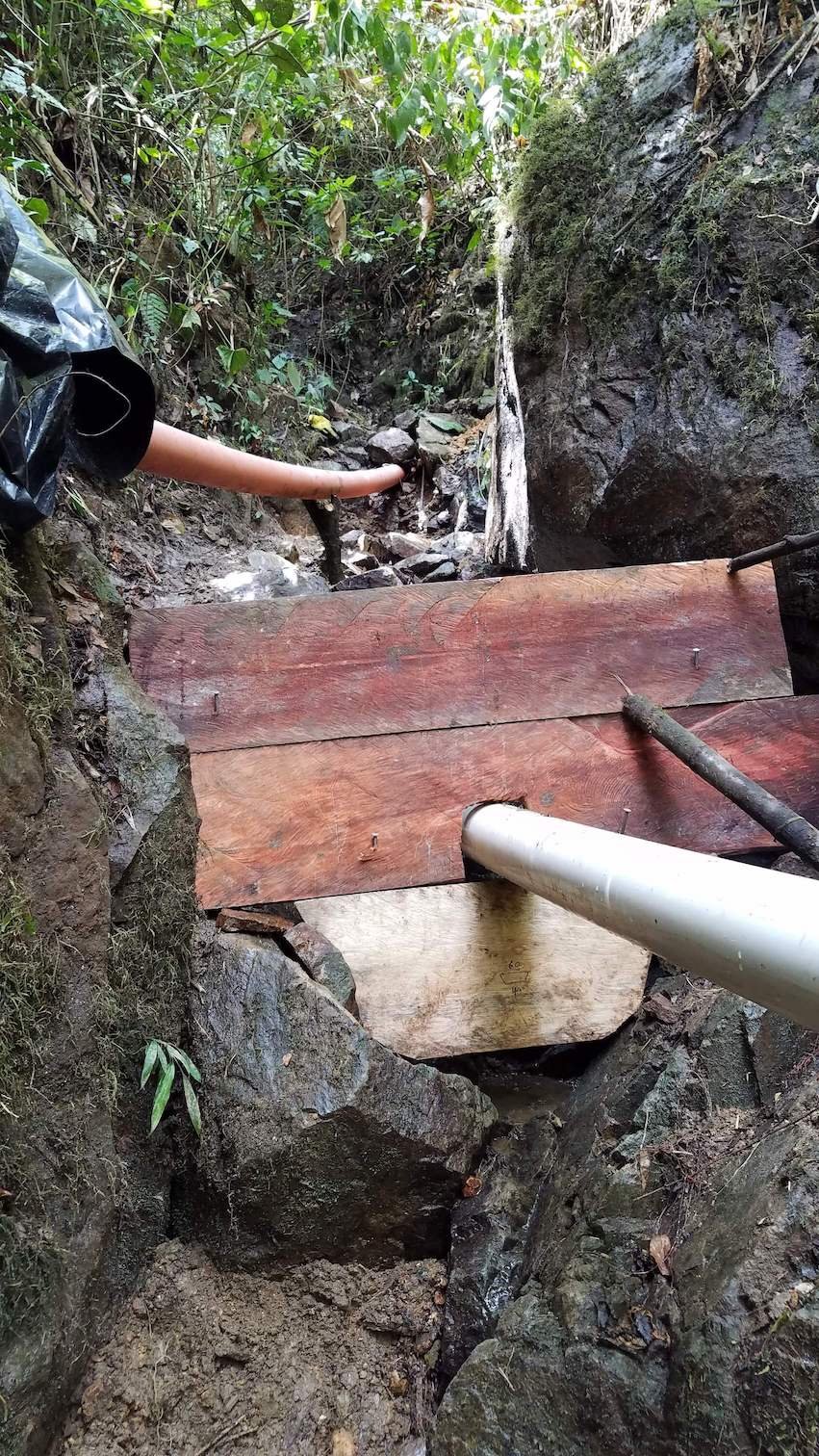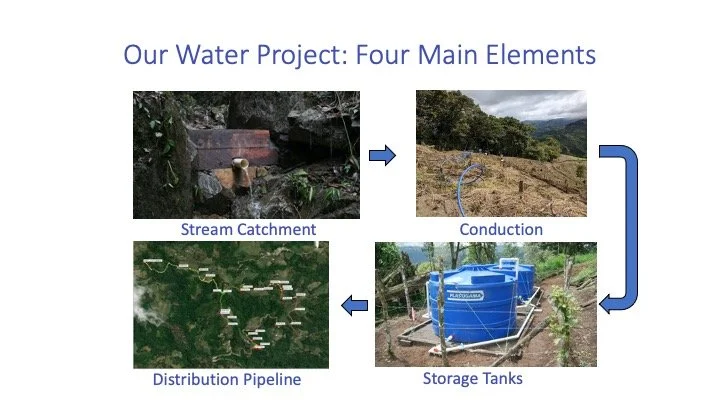
Water Supply in El Progreso, Ecuador
Our Current International Project
The El Progreso Water Project was originally conceived as a thesis by a student at Catholic University. This small farming community of 110 residents had unequal and insecure access to drinking water causing economic disparity. The EWB-USA Portland Maine Professionals chapter (EWB-PMP) partnered with a local NGO, Engineers in Action, to adopt this project to provide a reliable public drinking water system for the whole community.
2017 Assessment Trip
During EWB-PMP’s first trip to El Progreso, the project team visited three springs that had potential to become the community’s new water supply source. They took flow measurements and tested the water quality of each one. They also mapped each house and conducted interviews with every household to determine overall challenges and need.
-
EWB-PMP Assessment Team
The team first traveled in 2017 to learn about the community’s current situation, potential water sources and future needs.

-
El Progreso Community Center
The El Progreso community center along with most of the homes lie at the foot of some challenging terrain where sugarcane is grown.

-
All Parties Reviewing the Options
Using data gathered in the field and from community members, the team reviewed possible solutions for providing a reliable water system.

Selection of the Water Distribution System
After the Assessment trip, the project team evaluated the data and presented the options to the community. A gravity-fed water distribution system was ultimately selected. The source would be the confluence of two springs, known as the Double Spring, located high above the community center.
2018 Implementation Trip
The EWB-PMP chapter continues to work on a water distribution project in El Progreso, Ecuador. The project team traveled to El Progreso in the fall of 2018 for the first phase of implementation that included building a catchment for one of the water sources and installing concrete pads for the water storage tanks. The project team was able to locate an area of level ground that was suitable to pour a concrete pad for the water tanks.
-
Surveying Double Stream to Storage Tanks
The conduction line goes through steep terrain and ravines.

-
Building the Stream Catchment
A small impoundment traps water from the spring and directs it into a collection pipe.

-
Preparing Concrete Base for Storage Tanks
Members of the project team and the community prepare the site for the water storage tanks and for pouring the concrete slab.

EWB-PMP Project Team and Community Members
2020 Implementation Trip
Construction continued during the second implementation trip. The project team piped the storage tanks in place, began laying pipe between the spring and the tanks, and surveyed half of the water distribution system downhill from the tanks.
-
Piping at the Storage Tanks
Two 5,000 L water storage tanks were set on the pads constructed during the first implementation trip.

-
Digging the Conduction Line Trench
The project team and community members began digging the conduction line trench and laying the first lengths of pipe.

-
Laying the Conduction Line
The rolls of flexible plastic pipe purchased in-country need time to uncoil before inserting into the trench.

2020 EWB-PMP Project Team and El Progreso Community Members
Remote Work 2020-2022
Since the onset of COVID-19 travel has been suspended but the project team has continued to work on the design of the water system. We hired a local surveyor to complete a topographic survey of the area between the Double Spring and the storage tanks as well as the second half of the water distribution system. With this information we have been working to finalize the model of the water system. We have also been working with Engineers in Action to collect more water quality samples and sediment samples from the spring to help us design a water treatment system.
ECUADOR PROJECT LEAD: JULIANNE PAGE ecuadorlead@ewbportlandmaine.org
2023 Implementation Trip
After three years of COVID-19 travel restrictions, the project team was finally able to visit the community again. This trip included reconstruction of the existing stream catchment intake structure as well as site assessment and gathering the data needed to complete design of the remaining system components.
-
Rebuilding the West Catchment
The stream catchment intake structure had been clogged with sediment over time. We rebuilt it so water would enter pipes at the surface of the catchment instead of the bottom where sediment would settle out.
-
Surveying the Biosand Area
The area available for future construction of the water treatment system needed to be measured.

-
Walking the Distribution System
Water from the storage tanks will be distributed throughout the community using a network of pipes installed along the road.




